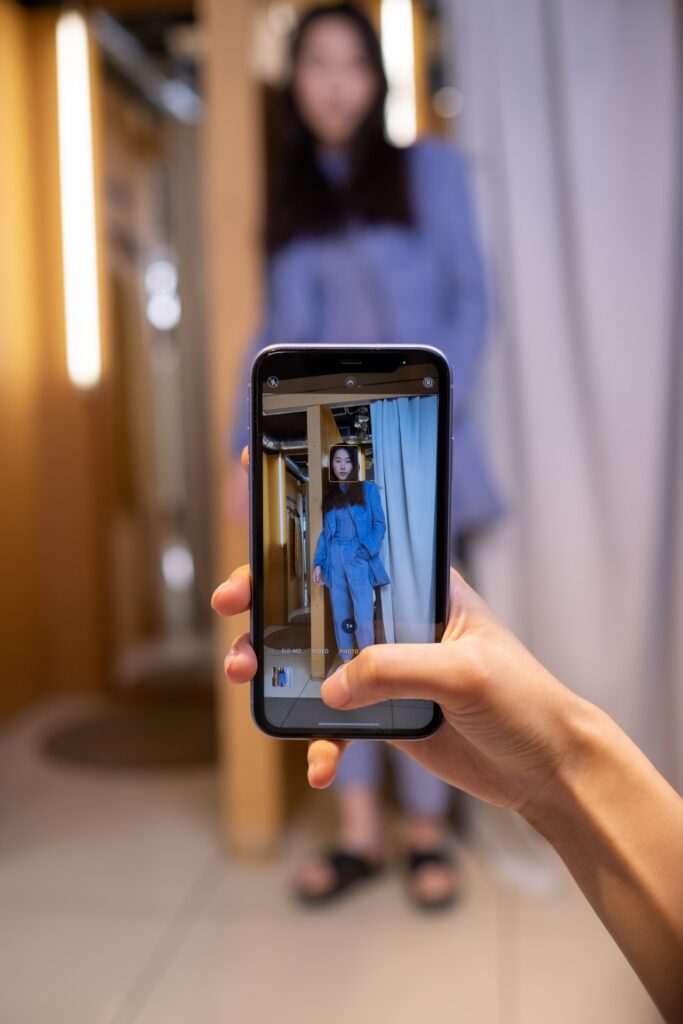Virtual Fitting Rooms and how does it work? The virtual fitting room market is growing as online shopping becomes more popular, with new technology aiming to reduce exchange and return rates while improving consumers’ online shopping experience.
The appeal of at-home on-screen shopping has progressively increased as the internet has become more pervasive and sophisticated. While the death of brick-and-mortar commerce has been overstated as much as a Supreme drop, our pandemic-plagued era has undeniably pushed the global use of internet buying. According to eMarketer, e-commerce will account for 15.3 percent of all retail sales in the United States this year, up from 7.1 percent in 2015. What is true for commerce, in general, is also true for apparel: 35.6 percent of apparel will be purchased online in 2020, up from 16.7 percent a decade ago.
Fashion technology firm Zeekit is an example of a company that uses this technology. By uploading a full body shot and mixing and matching items, the firm has collaborated with shops such as Adidas, Macy’s, and Modcloth to give buyers get a sense of what an outfit will look like on them without trying it on.
Walmart acquired the Tel Aviv-based startup Zeekit in May 2021, which allows consumers to virtually “try on” clothing when shopping online.
[email-subscribers-form id=”1″]

What is a virtual fitting room, and how does it work?
A virtual fitting room allows customers to try on clothing without having to touch anything. It works by overlaying an item on a customer’s live video feed. Before purchasing an item, the customer can see its size, style, and fit.
This type of technology, often known as virtual dressing rooms, has grown in popularity since the start of the COVID-19 pandemic.
During the pandemic, retail sales of clothing products dropped by 43.5 percent, the greatest of any industry. Shoppers were unable to purchase merchandise in-store due to global lockdowns. Even when those retail establishments reopened, consumers were more hesitant to try on clothing because they were concerned that it would raise their chance of contracting the virus.
Virtual fitting rooms, on the other hand, drastically eliminate this risk. People do not touch the virtual objects they are trying on, but they do get to see how a product looks on their own body form.

Technology
Augmented reality is used in the majority of virtual fitting rooms. A webcam scans a person’s physique to build a 360-degree 3D model in this scenario.
Artificial intelligence is used in other virtual fitting rooms. AI, like augmented reality, creates full-body 3D models of the customer standing in front of the camera using algorithms and machine learning.
Radiofrequency identification is integrated with the 3D model built by AI or AR (RFID). Another device that scans the items a shopper has brought to the virtual fitting room is this one.
One of the pillars of virtual fitting rooms is augmented reality. The technology “enhances” the real environment by superimposing digital components on top of it.
Virtual fitting rooms employ augmented reality to overlay digital clothes, goods, or makeup over a user’s image in real-time, allowing them to “try on” the items without actually trying them on. Some brick-and-mortar fitting rooms use complete “mirrors” (read: LCD displays) to “reflect” wardrobes back onto consumers, while others (like as Warby Parker’s glasses try-on tech) are app-based, smartphone-powered features that allow a user to judge fits/looks from the comfort of their own home.
Retailers are experimenting with these concepts in-store as well, and such testing necessitates some additional bells and whistles.
According to Invesp, a brand consulting firm,
- Over 30% of all products obtained online are returned, compared to 8.9% of items purchased in brick-and-mortar locations.
- According to a September 2020 Vertebrae survey, 76 percent of US customers indicated virtual try-on services increased their buying confidence.
Drapr, which was recently acquired by Gap, allows customers to build 3D avatars to evaluate if that maxi dress is really for them. It claims that its technology may boost revenue by up to 14%, the company noted that it has seen a wide variety of results from different brands.
Here are some of the Top Virtual Fitting Room Companies as per ventureradar.com:
- 3DLOOK
- Metail
- WEARFITS
- Virtooal Ltd.
- voofit
- Reactive Reality
- Fits.me
- Perfitly
- Coitor IT Tech
- TryMe
- Dressingr
- Metail Ltd
- FITIQUETTE (Acquired by Flipkart)

